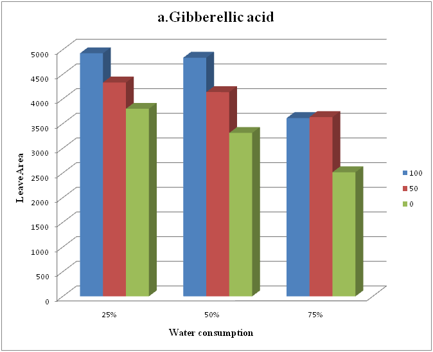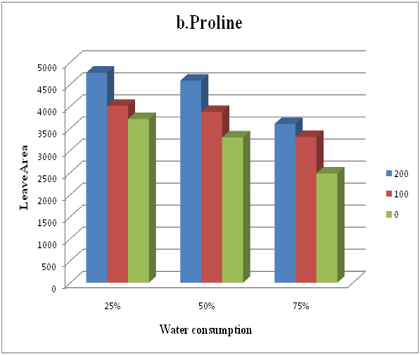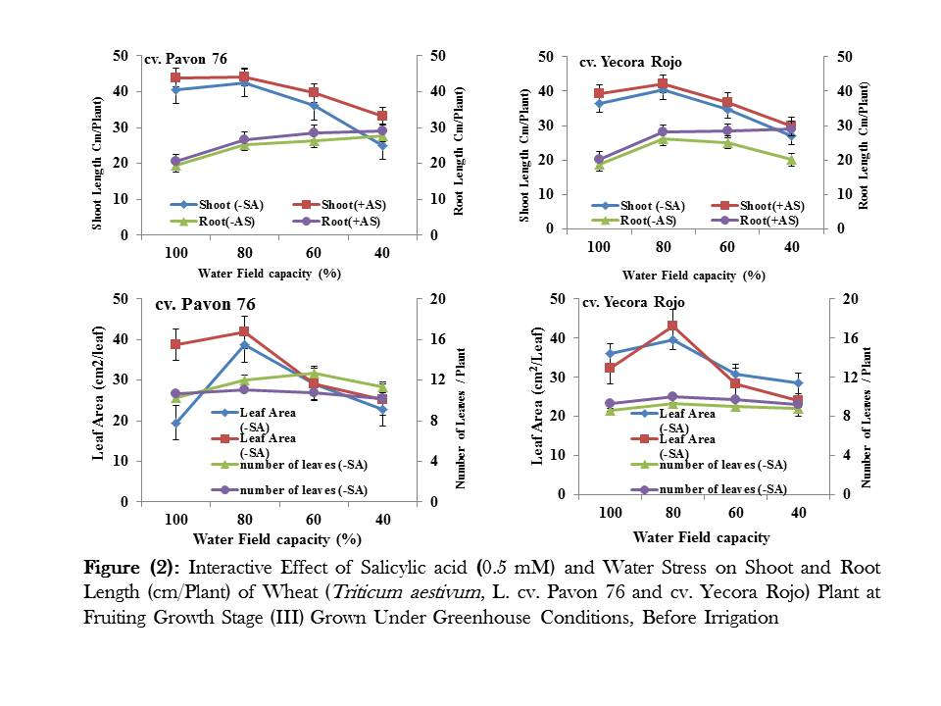October 21, 2020 at 9:41 pm | Updated March 16, 2022 at 1:28 pm | 7 min read
We are currently faced with the task of increasing food production for a growing population with little additional land. Agriculture already uses 37% of land area and converting more forests to farms can further exacerbate environmental problems, so strategies, such as the use of bio-stimulants and plant growth regulators, could be a possible solution to boost farm yields. However, more research is urgently needed in this subject. A new line of precise and portable scientific tools is making this challenging task less daunting.
New Solutions
One way to increase food production is to improve the yield from available farms. Industrial farming, in the form of increased fertilizers, irrigation, and chemical pest control, has produced problems like water and land pollution, the decimation of biodiversity, and substantial greenhouse emissions driving climate change. Hence, scientists are experimenting with bio-stimulants and plant growth regulators to increase yield and simultaneously reduce pollution and emissions from farms.
Bio-stimulants
Bio-stimulants are non-nutritional products that can increase plant growth and yield by helping plant physiology. Bio-stimulants can improve the efficiency of fertilizer use and decrease the need for subsequent high doses of nutrient application. They can also increase resistance to stress due to temperature and water by improving water use by plants.
Subscribe to the CID Bio-Science Weekly article series.
By submitting this form, you are consenting to receive marketing emails from: . You can revoke your consent to receive emails at any time by using the SafeUnsubscribe® link, found at the bottom of every email. Emails are serviced by Constant Contact
Bio-stimulants can be compounds or living organisms. Compounds used as bio-stimulants are usually prepared from biological sources, such as algal extract, humic acids, or vitamins. Microbes that are known to be beneficial to plants—such as mycorrhizal fungi or nitrogen-fixing bacteria, like rhizobacteria—can also be introduced.
Plant Growth Regulators
Since water scarcity is one of the major problems facing agriculture, there is a focus on using plant growth regulators to fight water stress. These regulators influence physiological and biochemical reactions. This can happen by triggering the release of other compounds, which in times like water stress can be crucial to the survival and health of a plant. By helping a plant to cope in drought, growth regulators ensure that the overall growth and yield are maintained.
Plant growth regulators can be hormones, such as salicylic acids or gibberellic acid, or other compounds, like proline – an amino acid. Proline is the metabolite that plants accumulate during stress. Like salicylic acid, proline acts as an antioxidant and helps in coping with stress.
New Class of Scientific Instruments
The effect of bio-stimulants and plant growth regulators can be seen on root and shoot growth, gas exchanges, and the biochemistry of plants. There are many tools that can help in recording these aspects, such as the ones produced by the company CID Bio-Science Inc:
- Leaf area meters, such as CI-202 Portable Laser Leaf Area and CI-203 Handheld Laser Leaf Area Meter, can monitor shoot growth.
- Leaf characteristics, biochemistry, plant processes, gas exchanges, and PAR absorbed can be measured by CI-110 Plant Canopy Imager, CI-710 Miniature Leaf Spectrometer, and CI-340 Handheld Photosynthesis System.
- The CI-600 In-Situ Root Imager and the CI-602 Narrow Gauge Root Imager can both track root growth and health.
Below, we will discuss how the leaf area meters have been used to study the effect of bio-stimulants and plant growth regulators on food and forest species.
Better Leaf Area in Corn Due to Plant Growth Regulators
A study in Malaysia focused on Corn (Zea maize) to see how proline and gibberellic acid affect the crop’s growth and yield.
Corn was grown with four irrigation treatments: control (no stress), 25%, 50%, and 75% irrigation. The sub-treatments applied to all levels of irrigation were Proline at 200 and 100 ppm, gibberellic acid at 100 and 50 ppm, as well as control with no plant growth regulators.
The effect of the plant growth regulators at different levels of irrigation was tested on total chlorophyll content, leaf area, grain yield per plant, and length of ears.
The CI-202 Portable Laser Leaf Area made leaf measurements. It is a small device that can be operated with one hand. The readings are non-destructive, so the same leaf can be tracked throughout the crop period. The measurements of leaf length, width, area, perimeter, aspect ratio, and shape factor are rapid and require just a few seconds. Moreover, data collection and calculations are made simultaneously, saving scientists a lot of time. The data is stored on the device and can be transferred later.
Corn plants responded positively to the spraying of proline and gibberellic acid, and the effect was greatest at the highest level of the plant growth regulators added. All the tested parameters (leaf area, leaf chlorophyll level, grain yield, and ear length) increased- see Figure1 for leaf area data.


Figure 1: ” Effect of Spray Proline and Gibberellic Acid at Three Different Concentrations
(ppm) on Leave Area (cm2) Under Different Irrigation Levels”, Al-Shaheen, et al. 2014. (International Journal of Botany and Research, 4:7-16)
Leaf Area Reflect Salicylic Acid’s Improvement of Wheat Growth
Wheat is the third most consumed grain and is used as a staple globally. Hence, in the Kingdom of Saudi Arabia, the potential of the hormone salicylic acid was tested in improving the performance of two varieties of wheat (Triticum aestivum, L.): Pavon and Yecora Rojo.
The two varieties of grains were soaked in salicylic acid for twelve hours. They were then sown and grown in pots in greenhouses, under irrigation of 100%, 60%, and 40% water field capacity. The normal water holding capacity (WHC) of 80% was used as the control. The effect on germination, growth parameters, and yield production was recorded.
The grains treated with salicylic acid all germinated faster than those that were only soaked in water.
The number of leaves, leaf area, and fresh and dry leaf weight were measured three times. After harvest grain, spikes and straw were used to calculate yield parameters.
Once again, the CI-202 Portable Laser Leaf Area Meter measured leaf area.
At the normal 80% WHC, the plant growth is maximum. For wheat, 40% and 60% WHC conditions can be classified as dry and very dry, where plant growth and yield is affected. However, salicylic acid increased shoot length, leaf numbers, and leaf area under all conditions, proving that it is helping the plants to cope with drought, as shown in Figure 2. The weight of straw and grains also confirmed the positive effect of salicylic acid.
Interestingly, plants grown with 100% WHC didn’t perform well either and had the least plant growth and yield.

Figure 2: (Image credits: Sayed et al., 2016. International Journal of Life Sciences. Vol. 5 No. 2. 2016. Pp. 88-104)
Leaf Area as an Indicator of Bio-stimulant Effect
At the University of Florence, Italy, scientists wanted to examine the response of the English oak (Quercus robur L.‘Fastigiata’) to two commercially available bio-stimulants, since the interaction between microbial bio-stimulant can be specific to plant species. So, the experiment used the following:
- A bio-stimulant that had a mix of nitrogen-fixing bacteria and Yucca extracts, humic acids, vitamins, marine algae, and amino-acids.
- An endo- and ectomycorrhizal fungi mixed with biostimulants bacteria, Yucca extracts, marine algae, humic acids, vitamins, and carbohydrates.
These two biostimulants were given for two years to seedlings transplanted in the ground and were compared to control seedlings that received no treatment. The stem diameter, shoot growth, fresh and dry leaf weight, photosynthesis, evaporation, and water-use efficiency were tested for two years.
Each year, the leaf meter was used to measure 50 leaves, from 25 shoots on 36 plants, using the CI-203 Handheld Laser Leaf Area Meter. The instrument takes non-destructive readings, so it is suitable for the repeated measurements needed in the experiment. Each individual reading takes just a few seconds, and the leaf area, length, perimeter, shape factor, aspect ratio, and void count are calculated immediately. Since the device has a GPS, the location can be tagged to identify leaves for future measurements. Data can be stored in the machine and transferred later to a computer by a USB.
The bio-stimulant with nitrogen-fixing bacteria produced the largest leaves. However, mycorrhiza also improved the leaf area compared to the control.
Photosynthesis, evaporation, and nitrogen and chlorophyll content in leaves were also higher in treated plants. So clearly, both bio-stimulants were helping the seedlings in establishing in adverse sites. However, overall the experiment would not show a difference in the effect of the two biostimulants on the oak.
More Studies are Necessary
Microbial bio-stimulants, as well as plant growth regulators, have to be tested for each crop and variety. While the three studies showed that the impact was positive overall, there can be nuances. For example, in the case of biostimulants, the fresh and dry leaf weights were not different, and it was not possible to determine which of the two microbes was the optimal choice. In cases such as these, extended studies or a larger number of studies asking different questions will be necessary. The scientists can, however, rest assured that they have more precise instruments for the field and laboratories, offering services not available before.
—
Vijayalaxmi Kinhal
Science Writer, CID Bio-Science
Ph.D. Ecology and Environmental Science, B.Sc Agriculture
Sources
A-Shaheen, M. R., Soh, A., & Al-Samarai, G. F. (2014). Growth response of corn (Zea maize L.) Toproline and Gibberellic acid spray under different irrigation levels. International Journal of Botany and Research, 4: 7-16. Retrieved from https://www.researchgate.net/publication/301584978_GROWTH_RESPONSEOF_CORN_ZEA_MAIZE_L_TO_PROLINE_AND_GIBBERELLIC_ACID_UNDER_DIFFERENT_IRRIGATION_LEVELS/citation/download
Sayed, H.E., & Mujahed, H.M. (2016). Exogenous Application of Salicylic Acid for Stimulates Germination, Growth and Yield Production of Wheat (Triticum aestivum, L.) Plant Under Water Stress. International Journal of Life Sciences, 5: 88-104.
Ferrini, F., & Nicese, F. P. (2002). Response of English Oak (Quercus Robur L.) Trees to biostimulants application in the urban environment. Journal of Arboriculture 28:70-75. Retrieved from https://www.researchgate.net/publication/312125548_Response_of_English_Oak_Quercus_Robur_L_Trees_to_biostimulants_application_in_the_urban_environment
Related Products
Most Popular Articles
- Transpiration in Plants: Its Importance and Applications
- Leaf Area – How & Why Measuring Leaf Area…
- How to Analyze Photosynthesis in Plants: Methods and Tools
- Plant Respiration: Its Importance and Applications
- The Forest Canopy: Structure, Roles & Measurement
- Stomatal Conductance: Functions, Measurement, and…
- Forest & Plant Canopy Analysis – Tools…
- Root Respiration: Importance and Applications
- The Importance of Leaf Area Index (LAI) in…
- Irrigating with Saline or Seawater






